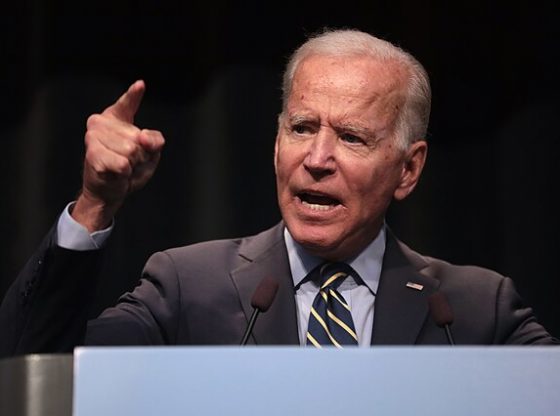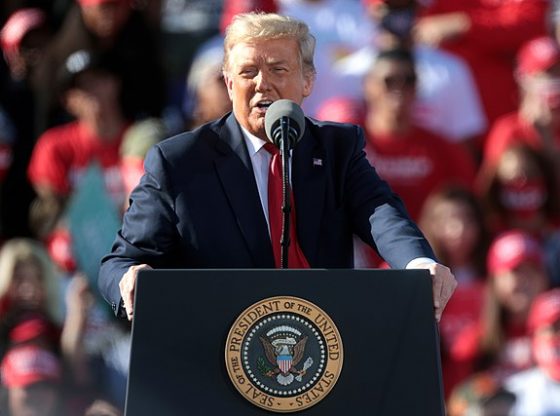Iran and its terror and militia proxy groups had days to prepare and bunker down for the U.S. retaliatory strikes that began on Friday, prompting criticisms that the Biden administration took too long to act.
Three U.S. soldiers were killed and dozens more injured in an airstrike launched by the Islamic Resistance in Iraq, the nexus organization for several Iran-backed militant and terror groups, against a military base in Jordan on Sunday. The Biden administration began its first round of retaliatory strikes against targets in Iraq and Syria on Friday – nearly a week later – which some critics feel was delayed to give Iran and its proxies time to prepare as part of a larger effort to minimize heightened conflict in the Middle East.
Former Deputy Assistant Secretary of Defense for the Middle East Simone Ledeen told the Daily Caller News Foundation she believes the delayed response was intentional because the Biden administration doesn’t want to strike Iran and its allies too harshly; the administration has been vocal that it doesn’t want a war with Iran or broader conflict in the Middle East.
“I think it’s a feature of the policy of appeasement this administration has followed since 2021 – allowing both the [Islamic Revolutionary Guard Corp (IRGC)] and local Iranian-backed militias to leave and take as much as they can with them,” Ledeen told the DCNF. “This is a purposeful decision on the part of the Biden administration.”
“While they must take action for domestic political reasons, they want to avoid causing real damage. This weakness increases the risk to our troops and our allies in the region and I fear will lead to more tragedy,” Ledeen told the DCNF.
“It’s almost like we want to minimize Iranian casualties by giving them as much notice as humanly possible,” Gabriel Noronha, executive director of Polaris National Security and former State Department official, said on Friday.
The U.S. retaliatory strikes hit approximately 85 target sites in Iraq and Syria where Iran-backed militias had been operating, including weapons depots, control centers and command headquarters locations, according to U.S. Central Command (CENTCOM). Friday’s strikes are expected to be one round of several as part of what was called a “multilateral response” by Department of Defense Secretary Lloyd Austin on Thursday.
“How many IRGC and IRGC-QF commanders will the U.S. kill and how senior are they? Or did they all get out of Dodge after days of the Biden administration telegraphing these strikes?” Mark Dubowitz, CEO of the Foundation for Defense of Democracies, said on Friday.
Some lawmakers shared in criticism that the Biden administration’s retaliatory strikes came too late and were publicized too heavily in advance, undermining the effort to stop Iran and its proxies from continued aggression in the Middle East. Critics of the Biden administration’s retaliatory response to attacks on American troops have also questioned why the U.S. has not targeted Iran directly.
“To restore effective deterrence, President Biden must hit Iran where it hurts,” Republican Nebraska Sen. Pete Ricketts said on Friday, amid reports that the Biden administration will not strike inside the country, according to CNN. “Weak, telegraphed responses will not cut it. We need leadership, not appeasement.”
“The administration’s strikes tonight against Iran’s proxies came far too late and after telegraphing how we would attack,” Republican Arkansas Sen. Tom Cotton said on Friday. “Only further, more devastating attacks against Iranian forces will scare the ayatollahs.”
Cotton was particularly concerned because several U.S. officials leaked details of the planned strikes, including duration and location, to media outlets, including CBS News and ABC News.
“The administration’s intentional leaks about what we would attack allowed Iranian leaders to flee,” Cotton said Friday.
Several Iran-backed militant groups had already “evacuated many of their headquarters inside Iraq and on the border with Syria and moved their weapons to new locations” to avoid the strikes, one U.S. official told NBC News on Friday. Kataib Hezbollah, an Iran-backed group part of the Islamic Resistance in Iraq – who the Pentagon suspects was behind the drone strike on Sunday – had ceased military operations ahead of the U.S. response.
Esmail Qaani, IRGC brigadier general and commander of the Quds force, traveled to Iraq earlier in the week and met with the leaders of some of the militant groups to discuss preparation options, the official told NBC. Ghaani reportedly encouraged them to move their forces underground and “to not pop their heads up from the parapet and offer the U.S. targets.”
The Iran-backed militants could still continue operations underground, including intelligence assessments and preparations for more attacks against U.S. forces, a retired U.S. colonel told NBC. Iranian President Ebrahim Raisi warned this week that there will be a “strong response” if the U.S. tries to “bully” Tehran, according to Reuters.
When pressed Thursday as to why there had not yet been a retaliatory response to the attack, White House National Security Council spokesman John Kirby said the U.S. would act at a moment of its own choosing, warning that it would be a “multitiered approach” and that “the first thing you see won’t be the last.”
Defense Secretary Lloyd Austin also defended the delayed U.S. response during a press briefing on Thursday, and declared it would “take away even more capability” of Iran’s allied militant groups throughout the Middle East.
The White House did not immediately respond to a request for comment.
Jake Smith on February 3, 2024
















